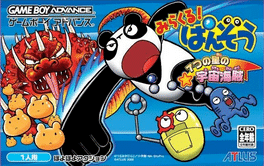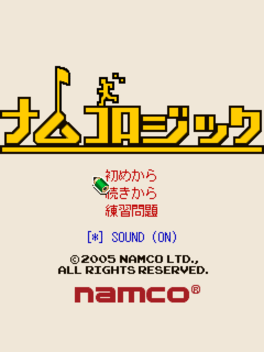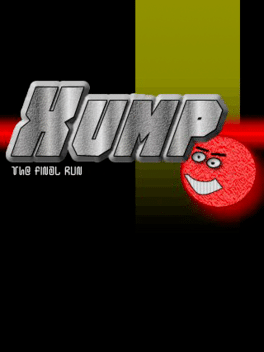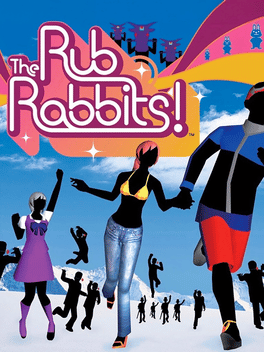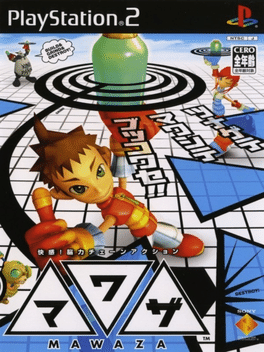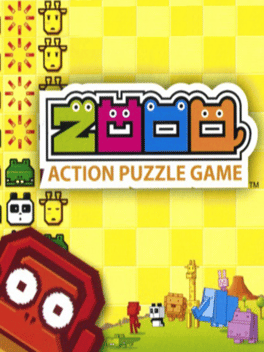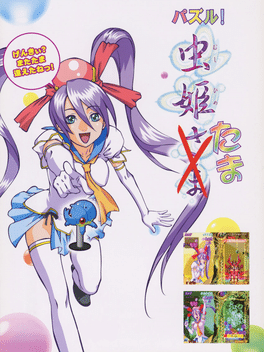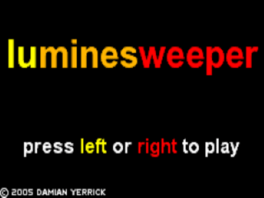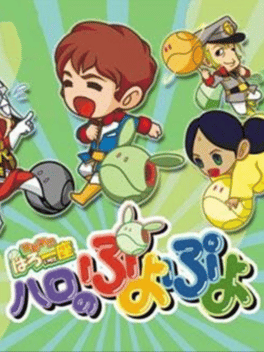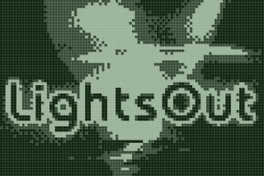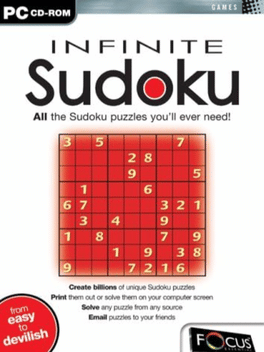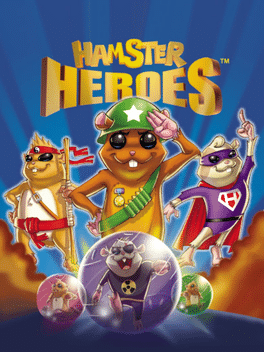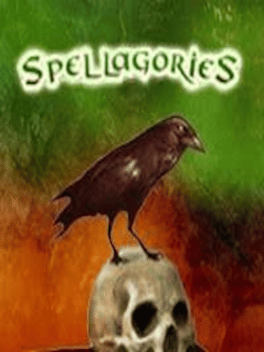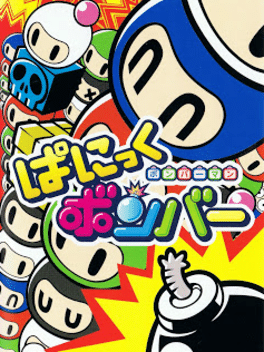New Playstation 3 Games - Page 244
-
Miracle! Panzou: 7-tsu no Hoshi no Uchuu Kaizoku
2005
Miracle! Panzou: 7-tsu no Hoshi no Uchuu Kaizoku is an Action game, developed and published by Atlus, which was released in Japan in 2005. -
Namco Logic
2005
Namco Logic
2005
Namco Logic is a nonogram game featuring fifty 15x15 puzzles based on various Namco games such as Pac-Man, Galaga, Dig Dug, and The Tower of Druaga. -
Aquacade
2005
Aquacade
2005
Crawl into your submarine and go pearl-fishing in addictive underwater action-puzzle game. You'll meet exotic marine animals as you try to reveal the secrets of the seabed while making combos out of colorful pearls. Discover mysterious items and use your ship's powers wisely to collect as many pearls as you can. -
Xump: The Final Run
2005
Xump: The Final Run
2005
XUMP is a puzzle game by Psilocybin Development. The game is simple but will keep you busy for hours, and thats a promise! The game consists of a 20x12 playfield which is filled with various types of blocks. Your job is to make the blue blocks disappear from the playfield by stepping on them. There are five main types of block, each of which behave differently. The first levels are for 'easy entertainment'. At first the levels are small, then get bigger and harder at each stage. Even if you do not read the instructions here, you should be able to handle the game when you start at level 1. To make everything a bit more tricky keep track of the time, but don't panic. If you solve a level without fault you will get a 'well done'. This 'well done' is worth one extra chance, otherwise you will just get a 'done' without any bonus. A 'well done' is the only possibility in this game to get an extra life. Xump has participated in the 16 Days Coding Competition. -
The Rub Rabbits!
2005
The Rub Rabbits!
2005
star 7.3Rub Rabbits is the sequel to XY/XX: Feel the Magic and features all-new gameplay mechanics, which range from holding the Nintendo DS sideways and upside down to multiple game modes. The game includes all-new music, art, and characters, as well as the ability to customize the look of the object of your affection. The game has six different multiplayer modes, which are compatible for playing with up to four players at a time. -
Mawaza
2005
-
Harry Potter and the Goblet of Fire: The Triwizard Tournament
2005
A small game included on disc 2 of the DVD release of Harry Potter and the Goblet of Fire. Take on the Triwizard tournaments with 3 mini-games focusing on each task "Dragon Arena" , "The Lake", and "The Maze". -
KSudoku
2005
-
Dr. Mario & Puzzle League
2005
star 7Dr. Mario/Puzzle League are recreations of two of Nintendo's most popular puzzle creations. Though Dr. Mario has already been released on the GBA as a Classic NES Series title, the version included in the dual-pack is enhanced specifically for the Game Boy Advance hardware instead of a straight emulation of the original NES title. Puzzle League was originally brought to life as Tetris Attack, but then rebranded on the Game Boy Color as Pokemon Puzzle Challenge a few years back. The GBA version is also enhanced for the GBA's much more capable graphics hardware and was previously an unlockable game via the GameCube - Game Boy Advance Link Cable in Nintendo Puzzle Collection for the GameCube. -
Dig Dug: Digging Strike
2005
star 6.3This 3D adventure combines the classic arcade digging action with new baddies, environments, weapons, mini-games and strategies to deliver the most action-packed Dig Dug game to date. Whether tackling the underground alone or wirelessly with a friend, gamers discover 15 stages with more than 80 areas in Dig Dug Digging Strike. Players explore 3D environments on the top screen of the DS, then plunge underground on the bottom screen to dig and connect fault lines that will trap monsters. Only by sinking enemy bosses do players move to the next level - and they encounter some familiar faces along the way. The dreaded Pooka and Fygar are back to threaten Dig Dug, along with a host of never-before-seen bosses. Dig Dug is armed with a series of thrilling weapons to combat monsters as well as elements from the environment including rolling rocks, quicksand and flowing lava. -
Zooo: Action Puzzle Game
2005
Help control the zoo animals by strategically swapping them around to create rows of the same animals and eliminate them from the board. A well kept zoo is a good zoo so keep them all in line and manage your board well! -
Puzzle! Mushihimetama
2005
A Cave-developed puzzle game starring Reco, the bug princess from Mushihime-sama. -
Luminesweeper
2005
Luminesweeper
2005
Luminesweeper, pronounced as "luminous sweeper", is a 2-in-1 combo of Lumines and Minesweeper. The game includes a fairly wide variety of skins and a compiler for creating your own skins. -
Kidou Gekidan Haro Ichiza: Haro no Puyo Puyo
2005
Gundam-flavored Puyo Puyo. Kidou Gekidan Haro Ichiza: Haro no Puyo Puyo is a Puyo Puyo game based on the Mobile Suit Gundam franchise, the original TV series in particular. Puyos are replaced by Haros, and several Gundam characters are playable. The game features a story mode, a verses mode, and a survival mode where random characters throw garbage Haros into the player's field. Whenever a chain is completed, the chosen character will shout a famous phrase from the anime series; the game provides a large number of phrases that can be assigned to each character by the player. -
LightsOut
2005
-
Sudoku Infinite
2005
-
Hamster Heroes
2005
Hamster Heroes
2005
Guide the Hamster Heroes through 15 levels to save them from the sinister Hamster X. -
Spellagories
2005
